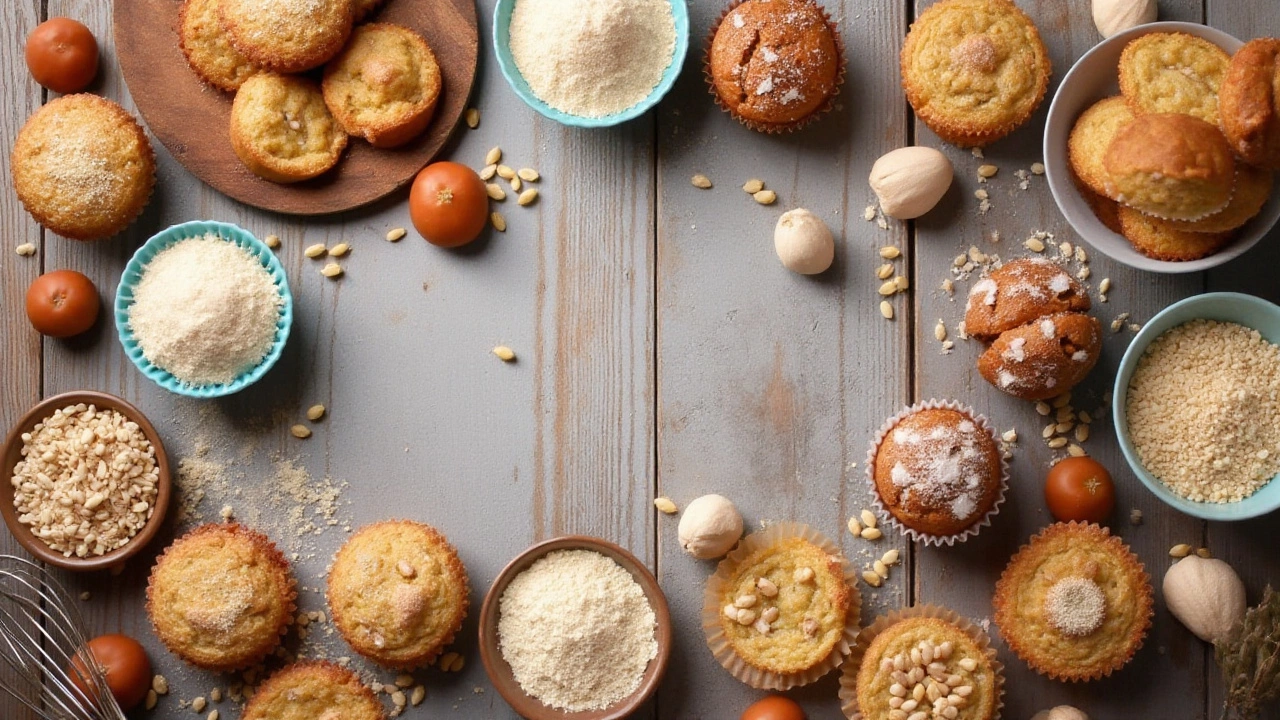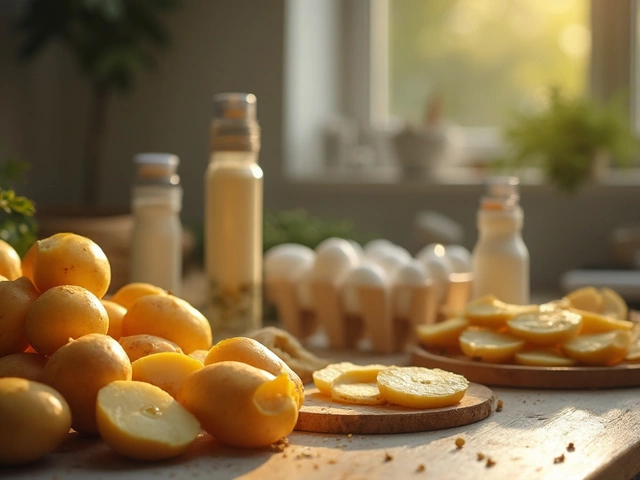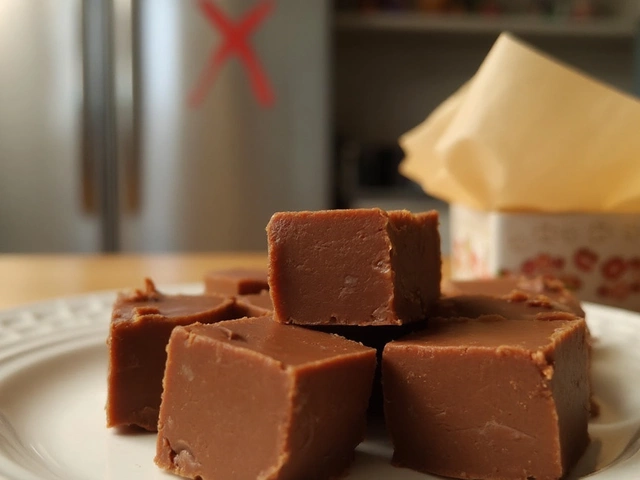
For anyone diving into the world of gluten-free baking, understanding the role of staple ingredients is crucial. Among these, rice stands out as a simple and adaptable choice. Naturally free from gluten, rice plays a fundamental role in crafting cakes that won't compromise on taste or safety for those with gluten sensitivities.
So, if you're wondering whether rice contains gluten, rest assured you're on the right track with your gluten-free journey. This article explores how rice can be effectively used in the world of baking, from the essential types you might consider to tips on making the fluffiest gluten-free cake. Let's embark on a journey that marries tradition with creativity, all while keeping it deliciously gluten-free.
- Understanding Gluten and Rice
- Rice as a Gluten-Free Baking Staple
- Types of Rice and Their Uses in Baking
- Substituting Rice in Conventional Cake Recipes
- Rice Flour: Benefits and Tips
- Creating Delicious Gluten-Free Cakes with Rice
Understanding Gluten and Rice
Gluten is a complex mixture of proteins found in wheat and other related grains such as barley and rye. It is particularly well-known for providing the elasticity in dough, helping it rise, and giving structure to baked products. However, for individuals with celiac disease or gluten sensitivity, consuming gluten can lead to a range of adverse health effects. In contrast, rice is naturally free from gluten, making it a staple in gluten-free diets. This characteristic has made it an essential component for those seeking gluten-free alternatives, allowing them to enjoy similar textures and flavors without the associated health risks.
The absence of gluten in rice does not compromise its versatility. Rice can be used whole as a grain or milled into flour to serve as a foundation in baking. It is intriguing how this humble grain has transcended cultural boundaries to become a key ingredient in various culinary traditions, particularly within the realm of gluten-free baking. This adaptability is not only related to its consistency and taste but also its ability to absorb flavors cohesively.
Kathryn North, author of 'Gluten-Free from the Ground Up', noted, "Rice is a perfect canvas—it absorbs flavors beautifully, making it an incomparable substitute in natural and gluten-free recipes."
One of the distinguishing features of rice is its numerous variants, such as white, brown, basmati, and jasmine, each offering unique textures and flavors. These characteristics can significantly enhance gluten-free recipes, providing not just variety but also nutritional benefits. Rice is rich in carbohydrates, essential for energy supply, and brown rice, in particular, contains fiber and essential vitamins that support overall well-being.
Rice flour has emerged as a favorite substitute for wheat flour in gluten-free baking. It contributes to a light and airy texture in cakes, a quality that can be hard to achieve when eschewing traditional ingredients. Unlike other gluten-free grains that might add a distinct flavor or heaviness, rice flour maintains a neutral profile, ensuring that the main flavors of your dish are highlighted. This makes it immensely popular for making gluten-free cakes, allowing them to be just as delightful as their conventional counterparts.
In exploring gluten-free baking, understanding rice’s properties and how it can be seamlessly incorporated into recipes can open up a world of culinary creativity. Whether you're a home baker or a professional, knowledge of these dynamics offers not just dietary advantages but a canvas of possibilities. Rice stands as a testament to how a gluten-free diet can be diverse and delicious. As awareness of its benefits grows, so does inventive cooking, where tradition meets modern dietary needs. Isn't it wonderful how a simple grain can transform everyday meals into inclusive feasts?
Rice as a Gluten-Free Baking Staple
When it comes to finding a versatile ingredient in the realm of gluten-free baking, rice takes the spotlight for many amateur and professional bakers alike. It's not only its lack of gluten that makes it a favorite, but its ability to blend seamlessly into a variety of recipes. Whether you’re aiming to bake light and airy cakes or more dense confections, rice provides both the texture and neutrality that allow other flavors to shine. One of the most appealing aspects is its ability to take flavors on easily, meaning that your cake will taste just as you desire, not like a grainy substitute many falsely assume gluten-free cakes might end up being.
The most common form of rice used in gluten-free baking is rice flour. This fine, powdery substance is derived from grinding long or medium-grain rice until smooth. Rice flour has a unique lightness, making it perfect for creating fluffy cakes, muffins, and even bread. Its high starch content works similarly to gluten, providing certain elasticity and helping batters and doughs rise. This is part of the reason why rice flour has become such a popular choice among bakers making the transition to gluten-free cooking.
"Rice flour is one of the most adaptable flours I have used," says renowned gluten-free baking expert, Elizabeth Barbone. "Its mild taste allows you to build layers of flavor without interference from the flour itself."
While the versatility of rice flour is largely uncontested, the proper handling of it is crucial. Many bakers recommend mixing rice flour with other gluten-free flours such as almond or coconut flour to balance textures. The trick is to achieve a blend that carries the right weight and texture, similar to that of wheat flour. Although rice is naturally gluten-free, beginners might initially find working with its flour a bit challenging due to the differing absorption rates compared to traditional wheat flours. This is why adjusting liquid quantities in your recipes is key. Reaching the right batter consistency often comes with practice and numerous attempts, which eventually lead to delicious cakes that most won't believe are gluten-free.
Take a moment to consider a few steps that can improve results when working with rice in your recipes. First, make a habit of sifting the rice flour as it helps in eliminating lumps, creating a unified mix. Another great technique is incorporating xanthan gum as a binding agent to prevent your cakes from crumbling, ensuring a sliceable and desirable texture. Within the world of gluten-free baking, rice undoubtedly represents the heart of experimentation, satisfaction, and tradition – allowing for freedom and creativity without sacrificing structure or taste.

Types of Rice and Their Uses in Baking
When it comes to incorporating rice into gluten-free baking, understanding the various types of rice and their unique qualities can truly elevate your culinary creations. Rice, with its versatile nature, isn't just a staple for savory dishes around the world; it also lends itself beautifully to baking. Each type of rice brings its own set of characteristics to the table, influencing the texture and flavor of your baked goods. Gluten-free bakers often turn to rice because it serves as a reliable alternative, providing body and subtle flavor when transformed into flour. Rice appeals to those avoiding gluten not only for its health benefits but also for its ability to seamlessly integrate into a wide variety of recipes.
Let's delve into the specifics. White rice, the most commonly known variety, offers a bland yet reliable base for numerous gluten-free cakes. Although it might not carry much nutritive value compared to its counterparts, white rice flour provides a smooth, almost airy texture that many bakers find ideal for delicate pastries and cakes. On the other hand, brown rice, with its fiber-rich bran layer intact, contributes a nuttier taste and denser consistency. Brown rice flour is favored for its wholesomeness and ability to add depth to the flavor profile of your gluten-free creations. Alternatively, sweet or glutinous rice, despite its misleading name, is also devoid of gluten. Known for its sticky, chewy texture, it's especially loved in recipes that require more binding properties, like certain cakes and sweets.
Beyond the common types, black and red rice offer a world of vibrant, health-conscious opportunities. Black rice, often dubbed the 'forbidden rice,' was once reserved exclusively for Chinese royalty. Its deep color hints at its antioxidant richness, and its earthy flavor adds intrigue to any recipe. Similarly, red rice provides not only a vivid hue but also a slightly savory taste and a beneficial mineral profile, making it an exciting addition to your rice-based desserts. Using these exotic varieties in your baking not only diversifies your ingredients but also brings historical allure and nutritional variation.
The choice of rice goes beyond flavor and nutrition; it involves understanding how each type behaves during baking. Rice flour can vary in grain size and absorbency, impacting the moisture levels in your cakes. A thoughtful baker will take these factors into account, experimenting with different ratios and combinations to achieve the perfect cake structure. By comparing the absorbency and weight of the rice types, adjustments in liquid ingredients can be made to ensure the final product stays moist yet structured, a challenge many gluten-free bakers face. This creativity is what truly makes a seasoned baker stand out.
"With rice, you have a blank canvas that encourages innovation in gluten-free baking," shares Amy Brown, a renowned pastry chef known for her gluten-sensitive options. "It provides structure and versatility, making it a favorite choice among chefs and home bakers alike."Understanding these nuances of rice varieties and their specific uses in baking is crucial for any enthusiastic gluten-free baker. Armed with this knowledge, one can create delicious, inclusive confections that are not only safe but delightfully satisfying. Rice, in its many forms, truly broadens the horizons of gluten-free baking, turning limitations into creative opportunities.
Substituting Rice in Conventional Cake Recipes
Swapping traditional wheat flour for rice-based alternatives in your cake recipes might sound daunting, but it opens up a world of possibilities with the right know-how. The key to making this shift is understanding the various properties of different rice products and how they interact with other ingredients. Rice flour, milled from either white or brown rice, is often used in place of wheat flour due to its neutral flavor and light texture. When substituting it in a conventional recipe, the proportions might not be one-to-one. A blend of rice flour and other gluten-free flours such as tapioca or potato starch can mimic the elasticity provided by gluten, ensuring your cakes don't end up dry or crumbly.
The journey doesn't end at flour swaps, though. Incorporating cooked rice or rice flour into your cakes requires some moisture adjustments. Eggs, oil, and even dairy substitutes like almond milk can help maintain the desired moist texture. But beware, as too much liquid might lead to a dense, heavy cake. It's a dance of balance—a beautiful one when done right. Texture aside, flavor profiles can be artfully enhanced by rice. Different types of rice, such as fragrant jasmine or nutty wild rice, can impart unique flavors, making your gluten-free cakes a treat for the taste buds.
"Rice flour is a great chum in the world of gluten-free baking," notes Élise Roquefort, a renowned gluten-free chef. "When paired correctly with other substitutes like cornmeal and almond flour, you can create wonders that make you forget about traditional wheat-based treats."
While precision is vital, creativity is your friend here. Using rice in unconventional ways, like making mochi-like textures within your cake or using powdered rice as a decorative dusting, can elevate your baking repertoire to new heights. But remember to keep experimenting in small batches first—it aids in avoiding substantial wastage and allows for fine-tuning to achieve the perfect cake texture and flavor.
For those who like to follow data-driven methods, let's consider statistics. A 2019 study by the Gluten-Free Food Program found that 80% of gluten-free products rely on some form of rice ingredient, underscoring its importance and reliability in gluten-free baking. Such dependence on rice demonstrates its effectiveness as a substitute. Leveraging these statistics, bakers can gain the confidence that rice, when used properly, stands as a robust alternative in conventional cake recipes without sacrificing quality.
Incorporating rice as a primary ingredient in your gluten-free cakes not only expands your culinary horizons but also provides a safe and delightful experience for those with gluten sensitivities. It requires a mix of science and creativity to get that perfect cake crumb, but rest assured, the results are worth the effort. Each cake becomes a testament to the versatility of rice, allowing bakers to break away from the norm while embracing the gluten-free lifestyle.

Rice Flour: Benefits and Tips
When it comes to gluten-free baking, rice flour emerges as a real game-changer. Not only is it naturally gluten-free, which is a dream come true for those who must avoid gluten, but it also brings a light and slightly nutty flavor, enhancing a wide range of baked goods. Some of the biggest benefits come from its ability to create both texture and structure, two critical elements in baking that can be challenging without traditional flour. Made from ground rice, this flour is highly versatile. It's effective in pie crusts, muffins, cookies, and, of course, cakes, making its ways into many recipes. Imagine the satisfaction of cutting into a fluffy cake that doesn’t compromise on the light, airy texture we all adore, thanks to the inclusion of high-quality rice flour.
If you’re new to the world of gluten-free baking or a seasoned pro, understanding how rice flour fits into your kitchen can open up a world of possibilities. For best results, it's important to know that rice flour can come in two main forms: white and brown. White rice flour is lighter and can yield slightly different results than brown, which contains more fiber and may give a slightly denser texture. Brown rice flour also boasts some added micronutrients. Meanwhile, for a particularly dreamy texture in cakes, blending rice flour with other gluten-free flours like tapioca or potato starch can offer balance and improved consistency. It's not hard to see why many bakers turn to rice flour—flexibility, flavor, and excellent performance are key qualities of this ingredient.
Tapping into the power of rice flour doesn't stop at taste and texture. It's also about the nutritional edge it brings to the table. Rice flour is a carbohydrate-rich source of energy, which can be beneficial for those requiring higher energy intakes. Apart from energy, rice flour contains negligible amounts of sodium and fat, making it a healthy choice for many diets. It's fascinating to note that despite being a gluten-free option, rice flour doesn't lag in contributing to essential nutrients like B vitamins, which are vital for metabolism and overall wellbeing. According to Dr. Alice Smith, an expert in nutrition and food sciences, "the unique composition of rice flour allows for a naturally enriched alternative that mixes well with several flours providing diverse health benefits".
In terms of practical tips for using rice flour in your kitchen, storage is key. To maintain freshness, store your rice flour in an airtight container in a cool, dry place. Because rice flour can sometimes lead to a slightly gritty texture, sifting it before use can make a substantial difference in your final product. When substituting rice flour for wheat flour, remember the 1:1 ratio doesn’t always work perfectly due to differences in gluten content. Start by replacing only about a quarter of the wheat flour in recipes to test it out. Gradually increasing the amount as you understand the nuances that best match the recipe you're crafting. Your experiments can pave the way to creating the perfect balance in gluten-free cakes, ensuring they're just as delightful to eat as their gluten-filled counterparts.
| Nutrient | Per 100g |
|---|---|
| Calories | 366kcal |
| Protein | 5.95g |
| Carbohydrates | 80.13g |
| Fat | 1.42g |
Creating Delicious Gluten-Free Cakes with Rice
Embarking on the adventure of crafting gluten-free cakes is an exciting endeavor, especially when incorporating rice into the mix. Whether you're using rice itself, rice flour, or rice starch, each brings a distinct characteristic to your baked goods. Rice flour, in particular, stands as a champion among gluten-free bakers due to its light texture and neutral flavor, which allows other ingredients to shine. Though the journey may seem daunting at first, with rice by your side, you'll discover that creating delectable cakes free from gluten isn't just possible but can also become a fun and satisfying baking experience.
One of the secrets to using rice in your cakes is the way it adapts to many cake recipes without overpowering them. By using a mix of rice flour alongside other gluten-free options like almond or coconut flour, you can add depth and moisture to your cake, a necessity for avoiding the dreaded dryness that sometimes plagues gluten-free baking. A great rule of thumb is to remember the ratio of blending rice flour with starches—often two parts rice flour to one part starch will yield a balanced texture. This mixture not only adds structure but also caters to various preferences and dietary needs, ensuring everyone at the table can indulge safely.
There’s always an array of tips and tricks to explore when working with rice. It is crucial to allow your batter to rest for a few minutes after mixing; this pause lets the grains of flour absorb the liquid better, resulting in a tender crumb once baked. Also, incorporating extra eggs or moisture through ingredients like applesauce or mashed banana can enhance the cake’s fluffiness and act as a binding agent, which is especially important since gluten is absent. The possibilities of how you ensure a quality bake are endless and experimenting is part of the fun. Remember, when you find that perfect balance, rinse and repeat until you've mastered your signature gluten-free cake recipe.
According to food expert Jamie Oliver, "Gluten-free baking requires patience and experimentation, but the reward is worth it. Trying different flour blends, especially with rice, can unlock flavors you'd never expect."
Rice flour offers endless versatility in gluten-free baked goods. When blended thoughtfully, it can mimic the texture and quality of traditional wheat flour.These insights shed light on the flexibility and creativity at your disposal, encouraging bakers to step beyond their comfort zone. There's something magical about making a cake that doesn't just taste good but feels like an accomplishment due to the love and science behind its creation.
Perfecting Rice-Based Gluten-Free Cakes
Achieving the perfect gluten-free cake isn't just about the ingredients; it's about understanding the role each plays. Here are some steps to guide your cake-making process:- Start by accurately measuring your rice flour and other gluten-free ingredients. Precision ensures consistency in your baking results.
- Consider adding ingredients naturally high in moisture like yogurt or sour cream. These help retain moisture in your cake.
- Don't rush the mixing process. Blend your batter evenly to avoid dense and flat cakes.
- Test your batter's consistency before baking. If too thick, gradually add liquid such as milk or plant-based alternatives until you achieve a smooth texture.
- Preheat your oven and allow your cake to bake without frequent opening, which can lead to deflation.
Baking with rice doesn't just end with cakes—this gluten-free staple opens up a realm of culinary exploration. It encourages culinary creativity while catering to gluten-free diets with ease. The journey of mastering rice in your kitchen is rewarding in flavor and satisfaction, making it a must-try for any enthusiastic home baker.





